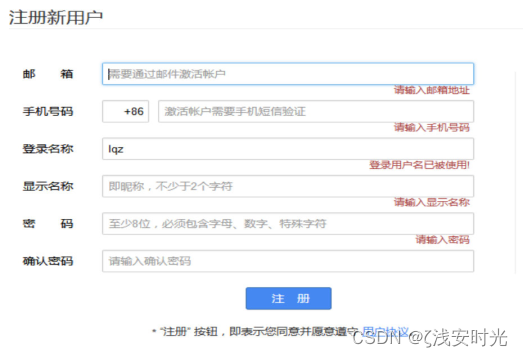-
Django与Ajax
一、什么是Ajax
- AJAX(Asynchronous Javascript And XML)翻译成中文就是“异步Javascript和XML”。
- 即使用Javascript语言与服务器进行异步交互,传输的数据为XML(当然,传输的数据不只是XML,现在更多使用json数据)。
-
AJAX 不是新的编程语言,而是一种使用现有标准的新方法
- AJAX 最大的优点是在不重新加载整个页面的情况下,可以与服务器交换数据并更新部分网页内容。(这一特点给用户的感受是在不知不觉中完成请求和响应过程)
- AJAX 不需要任何浏览器插件,但需要用户允许JavaScript在浏览器上执行。
- 同步交互:
- 客户端发出一个请求后,需要等待服务器响应结束后,才能发出第二个请求;
- 异步交互:
- 客户端发出一个请求后,无需等待服务器响应结束,就可以发出第二个请求。
- 同步交互:
场景:

优点:
- 异步提交
- 局部刷新
二、Ajax的案例
- def ab_ajax(request):
- # if request.is_ajax():
- if request.method=='POST':
- '''接收ajax提交过来的数据'''
- # <QueryDict: {'inp1': ['1'], 'inp2': ['1']}>
- print(request.POST)
- # d1 = request.POST.get('inp1') # str
- # d2 = request.POST.get('inp2') # str
- # d3 = int(d1) + int(d2)
- # 序列化
- import json
- # json.dumps(d3)
- user_dict = {"username":"kevin", "password":123}
- # return HttpResponse(json.dumps(d3))
- return HttpResponse(json.dumps(user_dict))
- # return JsonResponse(user_dict)
- return render(request, 'ab_ajax.html')
-
相关阅读:
【数仓】经典面试题总结-史上最全面试题思维导图总结(2022最新版)
【Linux】Centos yum源替换
Linux目录
【OFDM通信】基于深度学习的OFDM系统信号检测附matlab代码
蜂蜜配送销售商城小程序的作用是什么
云原生底座之上,顺丰智慧供应链领跑的秘密
创建ES索引
使用python自动监控程序运行过程数据
idea javaweb-jsp项目出现 Cannot resolve directory ‘error‘
pycharm:无法加载文件activate.ps1,因为在此系统上禁止运行脚本
- 原文地址:https://blog.csdn.net/qq_53842456/article/details/134511072
